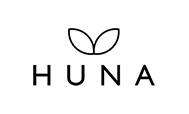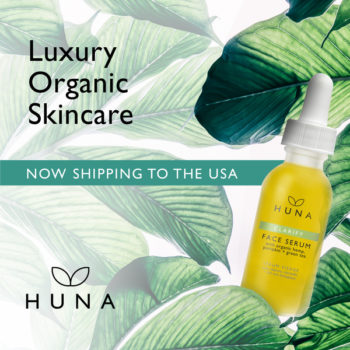The Gut-Skin Connection Series 1: Heal your Gut, Heal your Skin.

Our skin. It’s our largest organ. We can see, touch, and feel the health of our skin on a daily basis, but when our skin has a reaction- acne, eczema, rosacea, dermatitis, inflammatory skin conditions, etc., the first thing we normally do is rush to the store to buy topical lotions, pills, or spot treatment creams to quickly fix the imperfection. However, we should be looking a little deeper into what is actually causing these skin issues…and you may be surprised to hear the answer is actually in our gut.
You are what you eat. We hear this saying a lot. But is this really true? Does what we eat, drink, and put into our bodies really have that big of an effect on our skin? The answer is yes. We are not necessarily what we eat, but more what our bodies are able to absorb and use from what we eat. The condition of your skin is a wonderful tool to be able to read what is going on inside of you, as skin conditions are normally a sign of something else going on in your body. Inflammation begins in the gut, and digestion is the root of our health. Let’s explore this further.
To begin, what is the function of our gut? Oxford Textbook of Medicine explains it perfectly- “Its function is the transport, digestion, and elimination of ingested material to supply nutrients, vitamins, minerals, and electrolytes that are essential for life, together with the protection of the rest of the body from injurious or allergenic material.” ([i]) Basically, its job is to take whatever you put into your body, break it down, sort out the good and bad bacteria, supply your body with what nutrients it needs, and get rid of the rest. That’s a pretty big task!
When we are suffering from poor gut health and function, we are not absorbing properly, and when we are not absorbing properly, our bodies start to prioritize where our nutrients get used. The reason that we notice changes in our skin, hair and nails first is because our body will always protect and supply our most vital organs first- heart, lungs, brain. If we are not absorbing nutrients properly during our digestive process, this does not leave enough nutrients for beautiful glowing skin, healthy hair, and strong resilient nails- resulting in poor conditions.
Stomach acid and digestive enzymes are very important in the early stages of the digestion process as these break down your food into smaller molecules aiding in better absorption. If you’re not creating enough stomach acid, symptoms may include; acid reflux, belching, bloating, gas, and skin redness. Lacking digestive enzymes will lower the fat and protein amounts that your body absorbs, leaving your skin dry, dull, dehydrated, and lacking that healthy revitalized glow. Common skin conditions that may arise include eczema, psoriasis, dermatitis and acne.
There is a pretty simple solution that works for most with low stomach acid production. Consume the juice of half one lime or lemon in a small amount of water before meals, and ideally first thing in the morning before consuming anything else. This will help to jump start your stomach to create more acid for optimal digestion. Limiting drinks around meals will also help, as too much liquid will dilute your stomach acid and digestive enzymes which weakens digestion.
Our gut microbiome is made up of trillions of bacteria. In a perfect world, we would have 85% good bacteria, with 15% bad bacteria. When this ratio becomes unbalanced, we will start to see symptoms arise. Small intestinal bacterial overgrowth (SIBO) can compromise proper absorption of proteins, fats, carbohydrates, B vitamins, and other micronutrients due to bacterial interference. Excess bacteria can successfully compete for nutrients, produce toxic metabolites, and cause direct injury to enterocytes in the small intestine. Although the frequency of SIBO in acne vulgaris has not yet been investigated, a recent report indicates that SIBO is 10 times more prevalent in those with acne rosacea vs. healthy controls. Correction of SIBO leads to marked clinical improvement in patients with rosacea. [ii]
With this information, we know we want to keep our good bacteria, and gut flora happy. Thankfully, we can accomplish this through eating a diverse diet – not diverse in the sense of mixing healthy, and non-healthy foods – diverse in the way of many types of healthy, probiotic, prebiotic, plant-based foods.
Probiotics, or as some manufacturers refer to as “live or active cultures” means that the bacteria in these foods are still living. Take note, food processing procedures often kill off these bacteria. If the product is available on the grocery store shelf and not refrigerated- it may not contain any vital living actives. Some of the best probiotic foods and drinks are: Yogurt (ideally dairy-free), kimchi, kefir, kombucha, sauerkraut, miso, pickles, pickled vegetables, and more.
Prebiotics are types of dietary fiber that feed the friendly bacteria in your gut (mostly from fiber), that humans cannot digest. The good bacteria will eat this fiber, aiding in the digestion process and supporting your colon cells. Foods that contain prebiotics include: Garlic, onions, leeks, Jerusalem artichoke, dandelion greens, chicory root, asparagus, bananas, barley, oats, apples, and the list goes on.
Once you’ve got your pre and pro biotic foods working, you want to round out your food intake with fresh, local (when possible) fruits and vegetables, and finishing with lean proteins. Polyphenol-rich foods, such as cocoa, green tea and olive oil, can also increase healthy gut bacteria levels.
Avoid foods rich in refined carbohydrates, “the white foods”- a few being white bread, white sugar, white rice, artificial sweeteners, and sweets. It is also recommended to avoid dairy for optimal skin health, as a recent scientific study estimates that potential lactose and dairy intolerance is approximately 70% of the world’s adult population. [iii] Consumption of dairy with an intolerance can result in inflammation of the digestive tract, which often shows up as inflammatory reactions on the skin- such as eczema, dermatitis, rosacea or acne breakouts. Make some small changes to improve your gut health through diet, and you will be on your way to your healthiest and clearest skin ever.
[i] https://oxfordmedicine.com/view/10.1093/med/9780199204854.001.1/med-9780199204854-chapter-1501
[ii] https://www.ncbi.nlm.nih.gov/pmc/articles/PMC3038963/
[iii] https://link.springer.com/article/10.1007%2Fs11894-017-0558-9
Blog written by Brittany Hay from Team Huna.
- Huna Internal Beauty: Healthy Skin, From the Inside-Out - December 5, 2019
- My Personal Journey with Eczema - October 23, 2019
- Ingredient Spotlight: Calendula Officinalis - October 17, 2019



One comment on “The Gut-Skin Connection Series 1: Heal your Gut, Heal your Skin.”
Such good info!